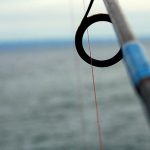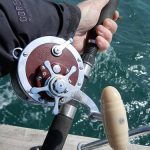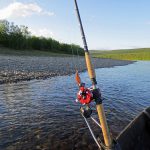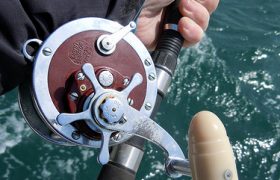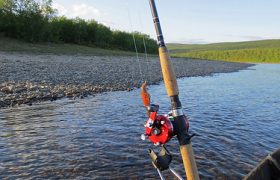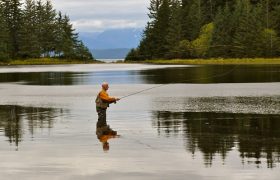When fastening a lure or hook to your line, it is best you utilize a improved clinch knot. Just put the tip of the line through the end of your hook, and then turn the line five times prior to passing the end right through the eye. Pull the end of the line as tightly as possible to finish.
Beginners and children should start with a spin casting reel. This is a simple design that is easy to set up and easy to use. Releasing the line is a matter of a button press, and drawing it back is just as straightforward. Overly complicated gear will just frustrate a novice.
Before you buy your hooks and bait, think about what size of fish you’re planning on catching. The bigger the fish, the bigger hooks and bait you’ll need, but big bait will be wasted on smaller fish. You’ll also want the size of the weights and bobbers you purchase to be in line with what you’re hoping to catch.
Let your fish go if it turns around before you finish reeling it in. Here you will find that it’s too late for reel and pump action. Next time, you should wait longer prior to reeling in the fish.
If you are going fishing, remember you can’t catch fish if your line isn’t in the water. You can waste a lot of time untangling knotted line, changing your lures, sharpening your hooks, and so on. The fish can be caught only if the line is actually in the water.
Be sure that your fishing line does not fall in the water and never throw it in the water when you are done. This could cause both birds and fish to get tangled in it, which could kill them. Bring a garbage bag with you to throw away any unwanted equipment.
If you are concerned that your line might be snagging on the eyes of your rod, there is an easy way to check their finish. Just take a dry cotton ball and rub it around the ring of each eye. If some of the cotton is pulled off on an eye, then you know it has a rough spot and should be replaced.
Cast your bait around structures like docks, rocks and logs. This is because fish are very attracted to these places, so you will be likely to catch more fish. The best place to find fish is near weed beds, but you will have to be careful to avoid getting your line snagged.
Be careful when fishing near stumps or fallen trees. Submerged foliage can be a great place to fish. It can also be very easy to get your line snagged and lose your bait altogether. Always fish in these areas with inexpensive lures. Never use a lure you would be afraid of losing.
The tips you’ve learned here should go a long way toward making your fishing trips more fun and successful. Whether you fish as a sport or to relax, it becomes a really rewarding experience to you. Remember the tips you’ve learned here and enjoy even more success on your next trip.

